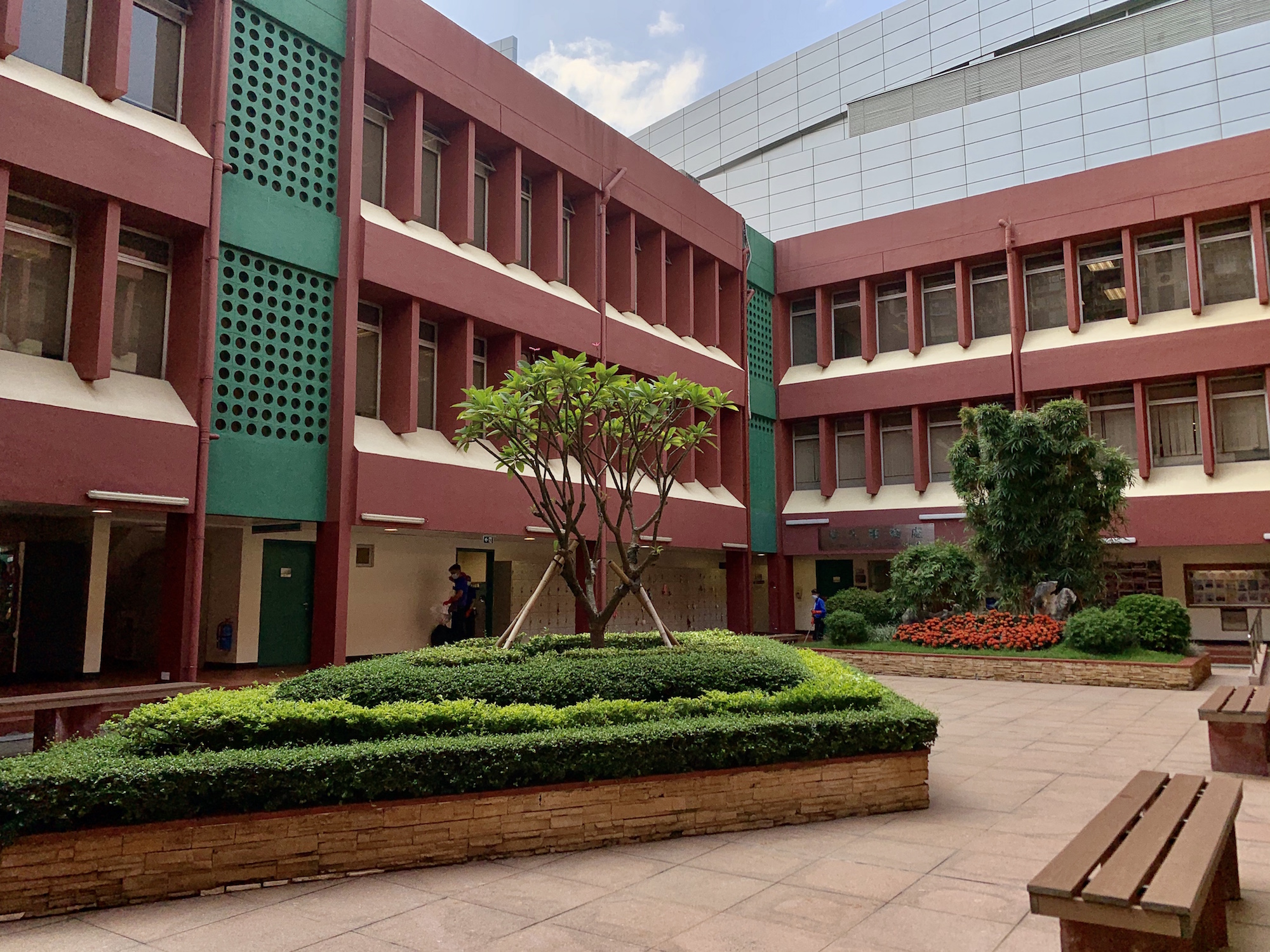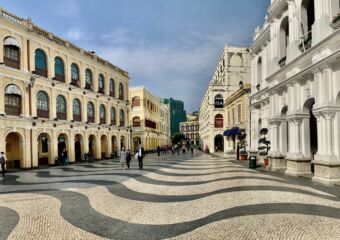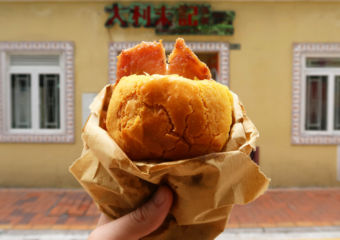Featured image source: Macao Archives
This is the story of an institution rather than of a building. “Liceu” is the Portuguese word for high school–or lyceum. With a history dating back to the 19th century, this institution came to a close with the transfer of sovereignty over Macau, when China took over the region’s government.
Liceu–secondary level education–is a kind of institution created in Portugal in the first half of the 19th century (1836) during Portuguese Queen Mary II’s reign. It arrived in Macau just a few years later and was housed in several different locations, as we’ll see. Take a tour through this historical institution and learn all about a strong legacy of Portuguese education in Macau.
Macanese and Portuguese Together
If you’ve been around long enough to have walked around the ZAPE area, you’re probably familiar with the bright yellow and burgundy building now housing the local higher education school, Macao Polytechnic Institute. However, if you’ve lived here before 1999, you’ll recognize it as Liceu de Macau and not as a university, as it used to be where the only Portuguese public high school was. Besides the children of the Portuguese people who lived in Macau, it was also attended by children and teens from the Macanese community, while the ones with Chinese as their mother tongue usually went to Chinese or English-based institutions.
It’s paramount to note that in 1999, Macau functioned as a Portuguese territory, but it was thousands of miles away. Rules, norms, and legislation were basically the same as the ones in Portugal. The idea of providing secondary education to Portuguese speakers in Macau became a reality in 1870. However, it was only offered by Catholic clerical institutions and operated out of the St. Joseph Seminar. It wasn’t until January 1878 that the Associação Promotora da Instrução dos Macaenses (APIM) helped foster a new model. The then association’s president, Pedro Nolasco da Silva–the now Macau Portuguese School used to be named after this man–became the school’s director.

Left: Former St. Augustine Convent Centre: Tap Seac Building Right: Praia Grande Avenue
Various Names & Locations
In 1894, Liceu de Macau opened with 30 students enrolled, as well as selected professors, including scholars and writers: Camilo Pessanha (Portuguese) and Wenceslau de Moraes (Macanese). Although it’s been around for more than a century now, this institution underwent several changes, namely in denomination and location. From the already demolished St. Augustine Convent–which operated from 1893 till 1900–the high school relocated to a building between Praia Grande Avenue and Leal Senado Building, where it remained for 17 years. The beautiful colonial-style building (that would later house Boa Vista Hotel) was the next chosen location; its official name was also revamped to Liceu Central de Macau and the school was able to offer the 6th and 7th education levels (the equivalent to Year 10 and 11, respectively) which were eliminated from the curriculum way back in 1898.
Just seven years after, the high school institution changed location, yet again. This time, to one of Tap Seac Square’s typical bright yellow buildings–currently the Cultural Affairs Bureau’s headquarters–where it stayed for 34 years. Interestingly enough, it used to be an asylum, but it’s mostly known as one of Liceu’s main locations.
Still located in Tap Seac, Liceu Central de Macau is renamed again in 1937, becoming Liceu Luís de Camões–dedicated to the Portuguese poet–but almost immediately changed to Liceu Nacional Infante D. Henrique, as there was already a high school in Lisbon with the same name.
After the school’s director complained about the building’s lack of conditions to properly run an education institution, the Portuguese Overseas Minister came to Macau and decided that the Liceu needed its own facilities. Finally, in 1958, a totally new school was built in the city center, more precisely where you can now see the Bank of China.

Modernity in Burgundy
After the school’s 75th anniversary, the government decided to relocate the facility to a new building. For this purpose, they invited Portuguese architect, Tomás Taveira, to craft the project. Taveira is a somewhat eccentric artist known for creating geometric and strong colored designs. Liceu Infante D. Henrique was no different: the modern-style set of buildings painted in bright yellow and burgundy had several interior patios where students could chat and lounge, while classrooms ran along long corridors. In Lisbon, there are two particular projects–both from Taveira as well–with a strong resemblance to the one in Macau: Amoreiras Shopping and a branch of Caixa Geral de Depósitos–a Portuguese bank–close to the Campo Pequeno area.
Liceu Infante D. Henrique was called so, but by the time it moved to NAPE, it offered not only secondary education but primary as well. It was frequented mostly by Portuguese-speaking kids and teens and wearing a uniform was mandatory for students ranging from 1st to 9th grades. 10th to 12th were taught in a far-left building, while the smaller ones had classes on the left side.
The former Liceu’s building is still standing and serving a similar purpose: it’s now the main facility of the Macao Polytechnic Institute, a higher education institution in Macau. With the info you were able to gather from this article, we suggest going on a tour to discover the sites where this institution was located and have a wider picture of its interesting and century-old history.
The trend of Portuguese parents enrolling their kids in Chinese or international schools is something quite recent. During the 80s and 90s, Lusophone children went to Portuguese-based institutions and that meant Liceu or Commercial School, the latter was then private-owned. Revamped in 1999 to house what would become the only school offering a Portuguese curriculum in Macau, it’s still standing and operating. Located beside Grand Lisboa, architect Raúl Chorão Ramalho is the author of the modern project.
Macao Polytechnic Institute Rua de Luís Gonzaga Gomes, Macau, +853 2857 8722, www.ipm.edu.mo/en



































